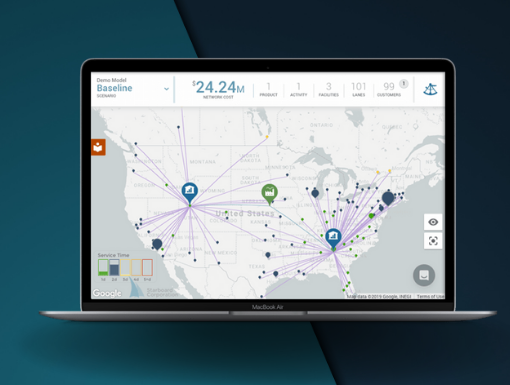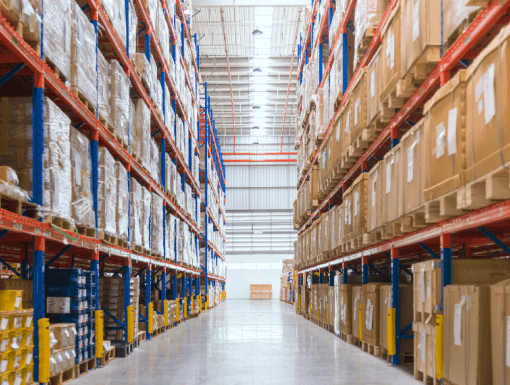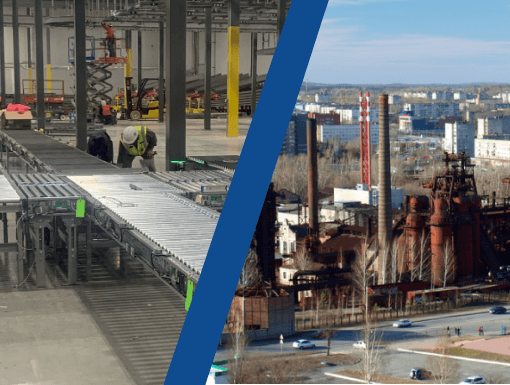Imagine you’re viewing your business operations from the conference room that overlooks your warehouse. Your brand-new facility is firing on all cylinders – throughput is at an all-time high, on-time shipments are at 97%, and you just filled thirteen new positions.
These are the fruits that are possible from choosing a great business site.
Every company has different priorities and places more weight on certain factors over others when choosing the best business location.
However, most proper site selection criteria will at a minimum focus on the best balance of geography, labor availability, local infrastructure, supply chain networks, operational costs, and financial incentives. Service is at the top of everything else. Their level of client service and support during site selection with a supply chain consultancy firm is usually the most significant element in your success.
This post will discuss the seven core advantages of proper site selection for industrial buildings, fulfillment, and distribution centers.
Advantages of Proper Site Selection
1. Lower Transportation Costs
2. Speed Up Your Delivery Times
3. A Clear Plan for Future Growth and Expansion
4. A Constant Stream of Future Labor Market Opportunities
5. Capitalizing on Local and State Tax Breaks
6. A Cohesive Team Decision that Removes Bias
7. Positive Impact on the Local Community
Lower Transportation Costs
The location of an industrial building can significantly impact transportation costs.
When picking a location for a business, executives should think about which key suppliers are nearby, the ease of access to major roadways, canals, and railways, and the traffic patterns for their chosen mode of transportation. Also, considering the proximity to parcel carrier facilities to either extend pick-up times later in the day or increase service coverage without adding to transportation costs, is a major decision-making factor.
By carefully selecting a site that takes these factors into account, businesses can help to reduce their transportation costs. For example, a business located near its suppliers will be able to take advantage of lower shipping rates by identifying its shipping destinations and shipping zones (spanning from Zone 1 to Zone 8).
Speed Up Your Delivery Times
Well-established transportation infrastructure can mean the difference between a smooth, efficient operation and a logistical nightmare. Inbound and outbound shipments must be able to move quickly and easily for your business to meet the needs of its customers.
A well-built transportation network can help speed up delivery times and reduce shipping costs. In addition, a good business location will put you closer to your ports and customers, which will allow you to run very leanly and lead to lower inventory levels by using the Just In Time (JIT) inventory method.
A Clear Plan for Future Growth and Expansion
Are the nearby business establishments mature? Are there any obvious site limitations? How may the site accommodate future growth? Key decision-makers will want to discuss these questions thoroughly when weighing various business location alternatives.
These concerns will be addressed in detail on the company’s primary market, the accessible labor force, transportation factors, availability of raw materials, available building or site sites, and community attitudes toward the sector.
Your company’s future is significantly dependent on how well you structure and maintain your fulfillment centers, storage space, automated storage, and more. By setting up the site for future development, you can avoid relocating in the future, which will be time-consuming, expensive, and inconvenient.
It is essential to consult with professionals who specialize in commercial and industrial property and can provide guidance on what needs to be done to prepare the site for future opportunities.
A Constant Stream of Future Labor Market Opportunities
According to the Bureau of Labor Statistics, the annual warehouse turnover rate sits at 43%. With rapid turnover and an ever-increasing battle for candidates finding a consistent pipeline of available talent can be a significant issue for many service-oriented and manufacturing businesses.
By intentionally setting their business near a large labor force, businesses can tap into a constant stream of available employees. This is especially important for factory jobs and packing stations and industries that experience peak season. Businesses can ensure that they have the necessary workforce to keep their operations running at total capacity by being located near a large job market.
Additionally, business owners can take advantage of the local talent pool by researching training and development grants to uncover local incentives that can be utilized to cover onboarding costs. This can also help attract and retain workers while creating a pipeline of skilled workers for future positions.
By investing in their workforce, businesses can create a positive cyclical effect that will benefit their operation for years to come.
Capitalizing on Local and State Tax Breaks
A commercial or industrial property’s site location can provide significant tax savings through special assessment districts, property tax abatements, tax-deductible facility improvements, and other financial incentives.
Creating a competitive environment to solicit tax breaks between various sites is crucial for helping generate greater value, which can span across multiple cities or even states.
For example, the IRS Notice 2006-52 states that commercial structures or systems that have achieved a 50% reduction in energy consumption through improvements to the heating, cooling, ventilation, hot water, and interior lighting systems are eligible for up to $1.80 per square foot in tax deductions.
Depending on your site selection criteria, you may also obtain government subsidies if your business stimulates the local economy and creates a certain number of employment opportunities.
To maximize your potential savings, it is vital to select the right site for the business. A greenfield site, for example, is undeveloped land that may be eligible for special tax incentives from the state or local government.
Another option is brownfield sites. These are often abandoned or underutilized properties that may also offer financial incentives and subsidies for redevelopment.
By working with a team of consultants and a qualified commercial real estate professional, businesses can ensure that they select a site that best meets their needs and takes advantage of all available tax breaks and incentives.
A Cohesive Team Decision that Removes Bias
Selecting the right location for a new business is a critical decision that can have far-reaching consequences. Which can be even further complicated when you consider the different options: greenfield, brownfield, or retrofit supply chain projects.
Unfortunately, the site selection process is often fraught with emotion and bias. This can lead to bad decisions that can jeopardize the business’s success. However, some steps can be taken to remove bias from the site selection process and ensure that the best possible location is chosen.
One crucial step is to review the criteria used to evaluate potential sites. This helps ensure that all stakeholders are on the same page and that all potential locations are being evaluated objectively.
Another critical step is to create a graded site selection matrix. This tool can be used to sort potential sites based on various factors, such as proximity to key markets, transportation infrastructure, and available labor.
At Johnson Stephens Consulting, we go through a multi-step filtering process where we canvas geographic regions and do a geographic assessment. Then we start looking at specific sites in the qualifying regions to create a list of feasible sites for visiting. Afterward, we go through two more iterations of review to get to a shortlist for final negotiations.
Having a well-built and iterative process to identify the best fit sites not only simplifies the process but also creates a competitive environment in negotiations for your future business location.
Positive Impact on the Local Community
Many communities maintain zoning laws that will limit the number of viable locations during site selection.
When creating your building proposal, it is essential to remove as many consequences for the local business community as possible.
While looking at the potential drawbacks, a thorough site selection process should provide a clear path for creating new jobs, providing health benefits to workers, and stimulating the local economy.
When business owners take the time to understand the local community and its needs, they can make well-informed decisions that will positively impact everyone involved.
By working with the community, businesses can ensure that their new facility will be a welcome addition that brings tangible benefits to the area.
Conclusion
Selecting the right site for a new industrial building or distribution center is a critical decision that can have far-reaching consequences.
It is an exhaustive list with several other factors that need to be considered to choose the best possible location. Some of which we didn’t even touch on (local zoning laws, key design aspects, customer demand, etc.). I suggest conducting a needs assessment before you review site selection criteria to get started.
If you need some additional assistance, don’t hesitate to contact us, and we’ll set you up with someone who can assist.







